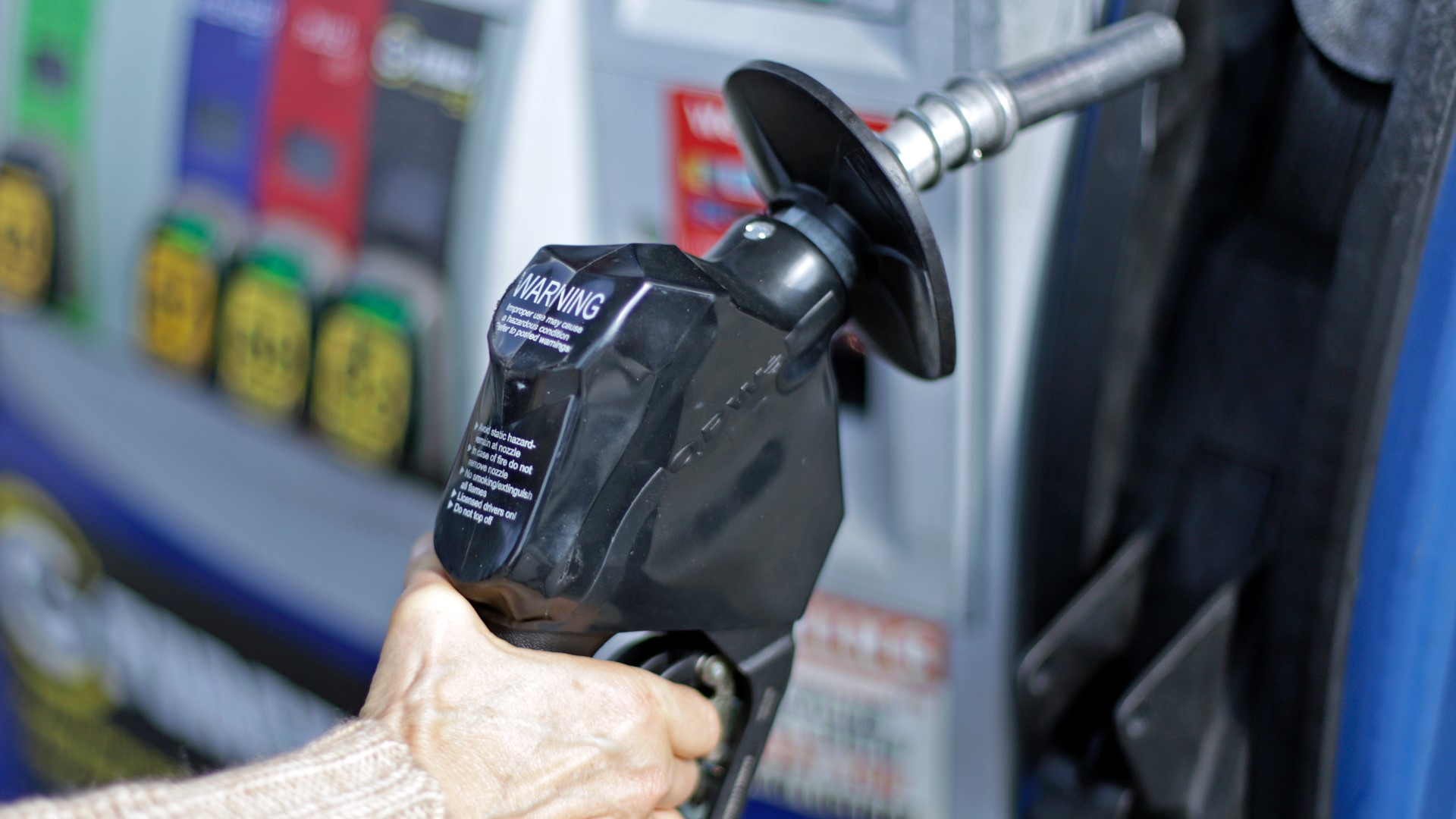CAMARILLO, Calif. — The average U.S. price of regular-grade gasoline jumped 15 cents over the past two weeks to $4.38 per gallon.
Industry analyst Trilby Lundberg of the Lundberg Survey said Sunday that the current price sits just a nickel below the highest average price in history — $4.43, set on March 11.
The average price at the pump is $1.36 higher than it was one year ago, according to Lundberg.
Average gasoline prices in Indianapolis rose 19.8 cents per gallon in the last week, averaging $4.17 per gallon on Monday according to GasBuddy's survey of 653 stations in Indianapolis.
Prices in Indianapolis are 22.3 cents per gallon higher than a month ago and stand $1.20 higher than a year ago.
The price of diesel has risen 22.6 cents nationally in the past week and stands at $5.518 per gallon, according to GasBuddy. According to Lundberg, the average price of diesel soared 43 cents over two weeks, to $5.58 a gallon.
According to GasBuddy price reports, the cheapest station in Indianapolis was priced at $3.89 a gallon on Sunday while the most expensive was $4.89 a gallon - a spread of a whole dollar. That $4.89 was also the highest price in the state, with the lowest price in Indiana Sunday at $3.81.
Nationwide, the highest average price for regular-grade gas is in the San Francisco Bay Area, at $5.85 per gallon. The lowest average is in Tulsa, Oklahoma, at $3.80 per gallon.
"Oil prices continued to climb after the EU signaled its desire to sanction Russian oil," said Patrick De Haan, the head of petroleum analysis at GasBuddy. "In addition, U.S. petroleum inventories saw yet another weekly decline as we near the start of summer driving season."
Diesel prices hit a record high and are at their largest-ever differential to gasoline prices on record. "While motorists filling with gasoline have seen a slight rise in prices, diesel's surge will be a double whammy as diesel prices will soon be passed along to retail channels, further pushing up the cost of goods," DeHaan said.
So as prices soar, you may be on the lookout for the cheapest gas in your area. If this search has left you wondering why the price is different at some locations, you're not alone.
Why do prices vary at gas stations in different areas?
American Automobile Association (AAA) Spokesperson Nick Chabarria said there are many factors that play a role when looking at gas stations within the same town.
"The difference in those prices are really going to come from the distribution and marketing costs that those gas stations incur," Chabarria said.
So for example, some gas stations are part of larger companies that have bigger storage facilities nearby.
Quicker access for them, means cheaper distribution costs, which could save consumers a few extra cents at the pump.
Chabarria said that's different for smaller fueling stations though.
"Other gas stations may be independently owned and are going to have to pay a distributor to deliver fuel," Chabarria said.
Chabarria added that drivers shouldn't always expect to find cheaper gas in rural areas.
"Costs are gonna vary based on how far stations are from fuel terminals. You know, how much it costs to transport that fuel to the gas station," Chabarria said.
Chabarria said the current crisis in Ukraine and crude oil costs are other key factors that are fueling rising prices.
"The spike in prices is a response to the announcement from the European Union that they're going to look for ways to begin to ban Russian crude oil imports."
A big thing to remember as prices have increased, there really hasn't been a decline in people traveling.
Now that we are entering the summer travel season, Chabarria said to expect the costs to continue to fluctuate.
Tips to save money on fuel
In the meantime, there are some tips AAA recommends you do to try and save money on fuel:
- Slow down and drive the speed limit. Higher speeds result in more aerodynamic drag.
- Avoid “jackrabbit” starts and hard accelerations. These actions greatly increase fuel consumption.
- Use cruise control on the highway to help maintain a constant speed and save fuel. However, never use cruise control on slippery roads because a loss of vehicle control could result.
- Minimize your use of air conditioning.
- Avoid extended idling to warm up the engine, even in colder temperatures. It’s unnecessary and wastes fuel.
- Maintain your car according to the manufacturer’s recommendations. Regular service will ensure optimum fuel economy.
- Make sure your tires are properly maintained and inflated to the correct level.
- When driving in town, adjust your speed to “time” the traffic lights. This reduces repeated braking and acceleration that consume additional fuel.
- When approaching a red light or stop sign, take your foot off the gas early and allow your car to coast down to a slower speed until it is time to brake.
For those interested, you can find the average price of fuel in your state here.

